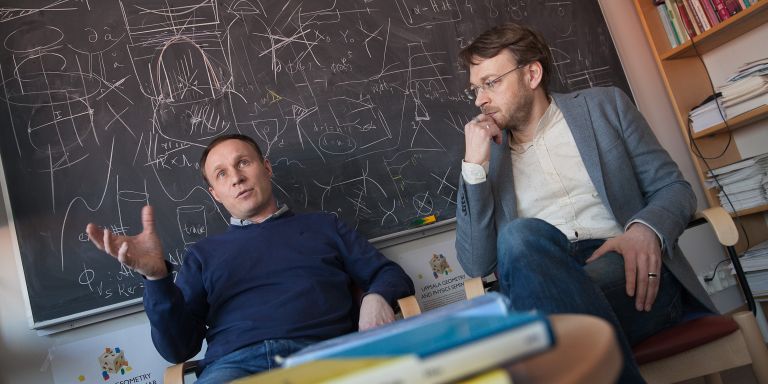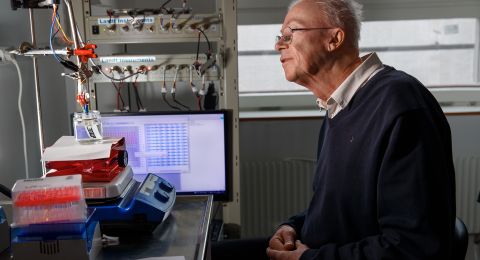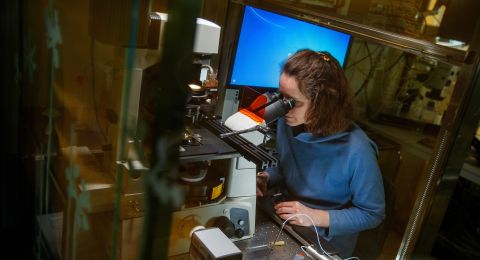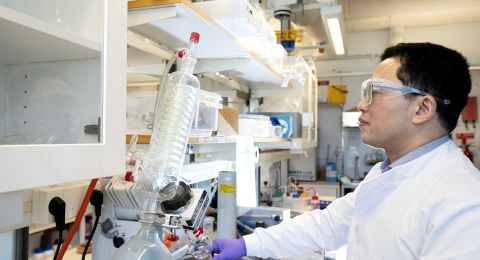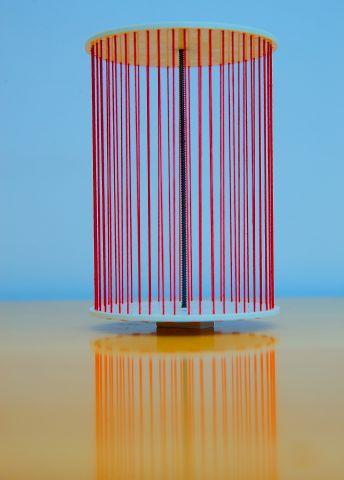
Project Grant 2014
Geometry and Physics
Principal investigator:
Professor Tobias Ekholm
Co-investigator:
Maxim Zabzine
Institution:
Uppsala University
Grant in SEK:
SEK 35 million over five years
Puff/Länk till Scholartext och den andra projekttexten (skriven av UU)
They know each other well by now. Tobias is a professor of mathematics, and Maxim a professor of theoretical physics. They have been discussing question of mutual interest on the boundary between the two disciplines since around 2007. It was then that Tobias rejoined the Ångström Laboratory having returned from a professorship in the U.S. To his delight, he found a Russian with whom he struck up a rapport in the corridor. Maxim, who is from St. Petersburg, had arrived in Uppsala a year earlier.
“My doctoral supervisor was Russian, as was my post-doctoral supervisor at Stanford. There is a kind of scientific culture that I would call ‘Russian’, a different way of approaching problems and exchanging ideas with each other. So it felt natural to talk with Maxim, and we are not so far apart, scientifically speaking, especially not now,” Tobias says.
Tobias is studying symplectic geometry and mathematical knots. Maxim is researching into the string theory in quantum physics. Their fields have much in common, and it is also here, where mathematics and physics meet, that is the current frontline of research.
Needing each other’s knowledge
A hundred years ago the distinctions drawn between mathematics and physics at modern-day universities did not exist,” Maxim explains.
“There has been a marked tendency toward specialization. But some 30 – 40 years ago, things began to change, following dramatic developments in both physics and mathematics. Scientists in these fields suddenly realized they needed one another.”
Tobias points out that the main strides made in modern mathematics over the past decades are directly or indirectly related to mathematical physics.
“Physics always has a clear objective, which is to explain how everything works. But mathematics sometimes needs input from somewhere, which is where physics comes in. And physicists need the tools that we mathematicians can provide.”
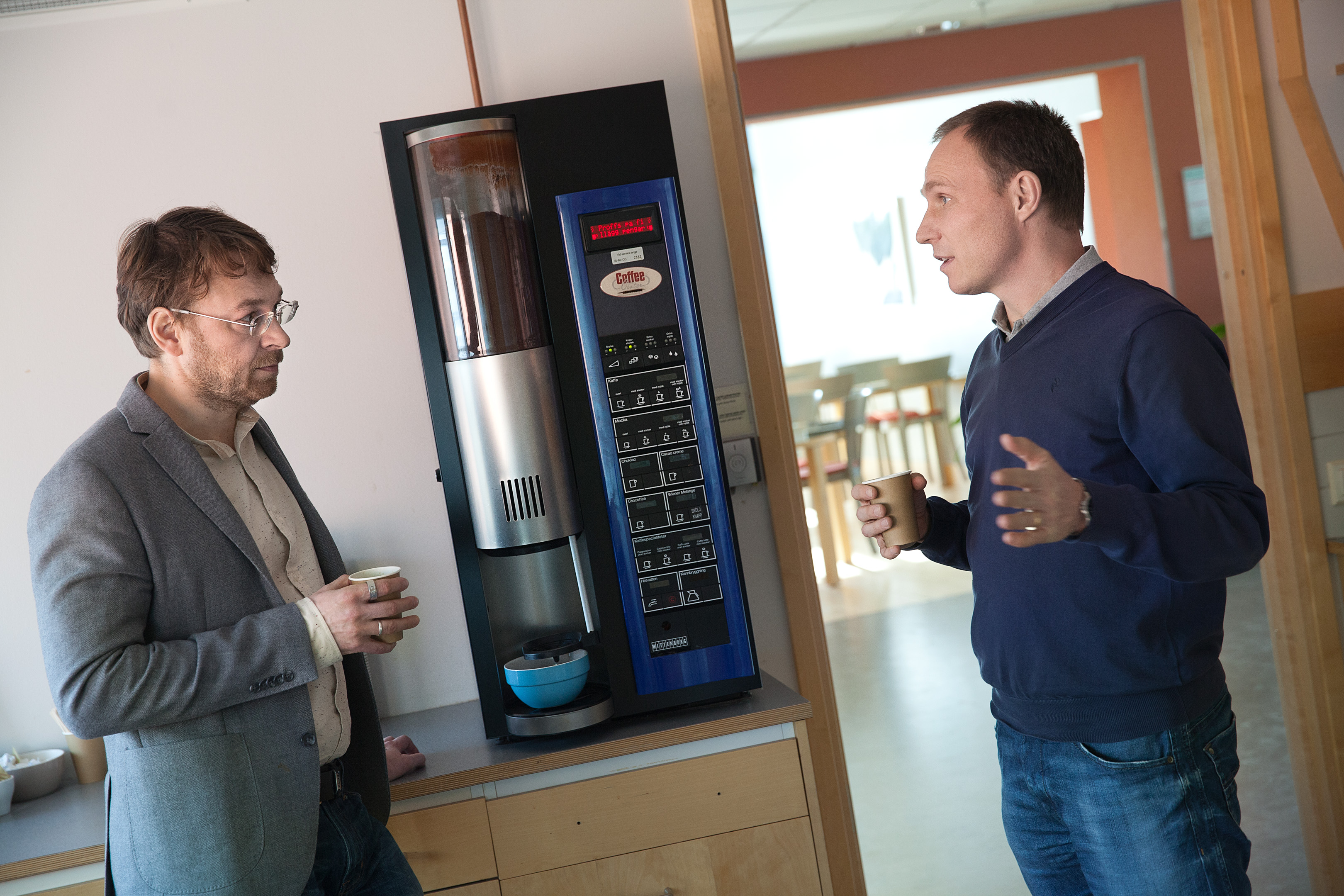
Tobias and Maxim are delighted to be able to develop their collaboration thanks to project funding from the Knut and Alice Wallenberg Foundation. Together, they want to create an internationally attractive research environment combining geometry with physics. The aim is to attract gifted young researchers and create the “critical mass” for major new breakthroughs.
“We need highly skilled mathematicians and physicists. They must be able to understand both languages,” says Tobias, who is also a Wallenberg Scholar.
Knots and strings
The dramatic scientific events of the 1970’s concerned, among other things, the gauge theories, which were to become important to both physicists and mathematicians. The gauge theories are the theoretical basis for the “Standard Model”, which describes the very smallest particles and their interactions.
The Standard Model describes different forces in quantum physics, but one force that does not fit into the model is gravity. Something must give if that problem is to be solved, and instead of seeing particles as points, it has been found fruitful to see them as one-dimensional strings. This is how Maxim describes his field of research.
Tobias’ field – symplectic geometry – is rooted in classical mechanics. Over the past two decades, the field has moved much closer to other theories of physics, in particular, supersymmetrical versions of quantum field theory and string theory.
“You might say we are studying the same things from two different angles. While the gauge theories were revolutionizing particle physics, geometricians were adopting a new approach to the knot theory, among other things. These approaches derive directly from gauge theory and string theory in physics,” he explains.
Mathematical knots resemble a tangle of strings in the room, and are found in proteins and DNA, for example.
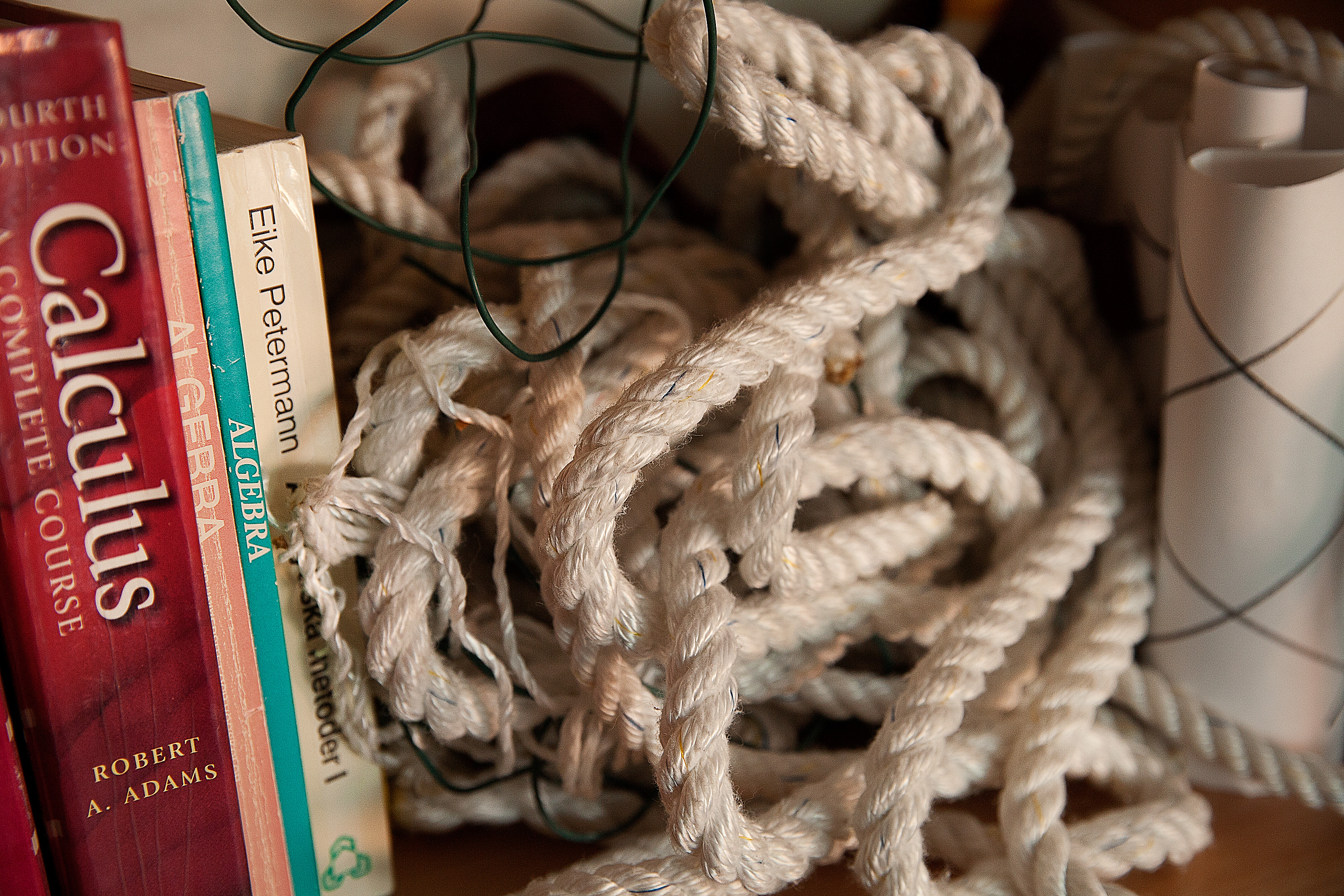
“Knots may be said to be the mathematical counterpart of banana flies in biology. It is very easy to find relevant examples, and very many of the enormously difficult mathematical problems there can be applied in a wide variety of areas,” says Tobias.
Unpredictable applications
Maxim points out that, historically speaking, the most fundamental scientific breakthroughs have resulted in the best applications. But it is hard to know how and when it will happen. Sometimes it takes a long time.
“When Einstein developed his general theory of relativity to describe gravity, he used both mathematics and physics, and he had no idea that his theory would be just as important 100 years later, and have applications such as GPS technology.”
Solving the difficult theoretical problems in symplectic geometry and string theory requires just the sort of environment that Maxim and Tobias are now creating – where the foremost experts in the field and drink coffee and put their wise heads together.
“The driving force behind our project is actually fairly obvious: Maxim knows an awful lot of things that I don’t, and vice versa. So getting together is really quite natural,” Tobias says.
Text Susanne Rosén
Translation Maxwell Arding
Photo Magnus Bergström
